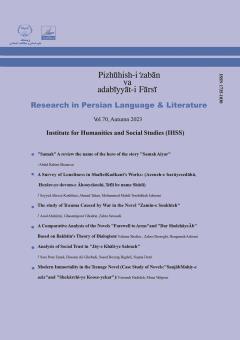“Tiny characters” are among lovely and specific characters in world folk legends. They are very small children who have vegetable or human roots and are born into families that have longed for children, like “Nokhodi” in Iranian folklore legends. These characters can b
More
“Tiny characters” are among lovely and specific characters in world folk legends. They are very small children who have vegetable or human roots and are born into families that have longed for children, like “Nokhodi” in Iranian folklore legends. These characters can be seen not only in the tales of our country but also in the legends of other nations and can be considered and studied. Thus, this research aims to study and analyze Tiny characters, comparing them and defining their characteristics.Here to achieve this goal, we used Iranians’ folk legends, gathered by Fazl-o-allah Mohtadi (Sobhi), such as “Nokhodoo”, “Jastik Nokhodi” and “Nokhodi and Deev”. Also German folk legends written by Grimm Brothers, such as “Tom thumb”, “Thumb and Thumbling”; and Japanese folk legends written by Shogo Hirata and Florence Sakade, such as “Peach boy, Little One-Inch, Little One-Inch ” are used.This research tries to show the similarities and differences of Tiny characters in the folk legends of Iran and the world with a descriptive-analytical method and with the approach of comparative literature. These similarities can be found in the vegetable origin of most of these characters and their ethical features such as confidence, responsibility, braveness, intelligence, justice seeking, fighting against oppression and so on. There are also small differences in the type of their birth, how to achieve the goals, etc., which can be considered.
Manuscript profile


